Established in 1801, the Brooklyn Navy Yard served as America’s premier naval shipbuilding facility for 165 years, and launched America’s mightiest warships, including the USS Monitor, the USS Arizona, and the USS Missouri. Peak activity occurred during World War II, when some 70,000 people worked at the Yard. The Yard was in continuous operation until 1966, when it was decommissioned and then sold to the City of New York. Today, the spirit of innovation again abounds on the 300-acre site, where business is booming, employment is soaring, and the Yard is undergoing its largest expansion since WWII.
Timeline
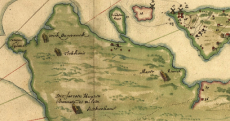
Dutch settler Jansen de Rapelje purchases 335 acres of land on Wallabout Bay from Lenape Indians.
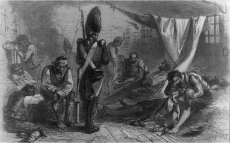
New York City's occupation is at the heart of the American Revolution. As many as 11,500 die on the British prison ships moored off Wallabout Bay. The most infamous ship is the Jersey, where American soldiers, merchants, and traders are imprisoned for disobeying the British embargo.
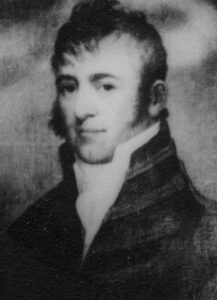
President John Adams, a New Englander, favors a strong central government and a navy capable of protecting commerce and defending the young nation in a dangerous world. At the end of his presidency, Adams moves quickly to authorize the establishment of the first five naval shipyards, including the Brooklyn Navy Yard.
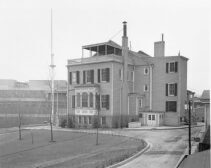
The Commandant's House, or Quarters A, is completed. It is the oldest building associated with the Yard. It has been a private residence since 1971, and a National Historic Landmark since 1974.
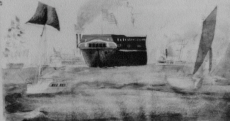
U.S. law makes slave-trading piracy, punishable by death. From 1820 to 1861, U.S. Navy squadrons serve to suppress the trade off the coast of Africa. Yard-built ships – including the USS Ohio, Savannah, Peacock, Dolphin, Vincennes, Fulton II, Decatur, San Jacinto, and Niagara – play key roles.
The Government purchases from Sarah Schenck the 25 acres of property on which the Naval Hospital now stands.
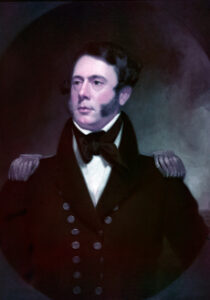
Commodore Matthew C. Perry is instrumental in founding the Naval Lyceum (the precursor to the U.S. Naval Academy) to "promote the diffusion of useful knowledge, foster a spirit of harmony and unity of interests in the service, cement the links which unite us as professional brethren." The first professional naval publication, the Naval Magazine, is published here in 1836. Washington Irving and James Fenimore Cooper are frequent contributors.
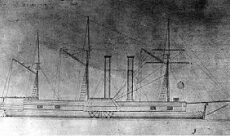
The 9-gun side-wheel steamer Fulton II is launched as the first U.S. steam warship assigned to sea duty.
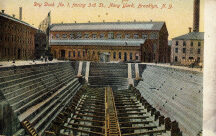
The government builds its third granite dry dock, using a steam-powered pile driver for the first time in the United States.
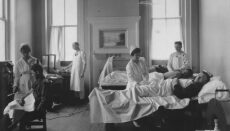
Deeply committed to improving medical care, young naval surgeon E.R. Squibb seeks assignment to the Naval Hospital where he perfects the manufacture of anesthetic ether. In 1857, he founds his own pharmaceutical company outside the Yard, which provides the majority of medical supplies for the Union Army during the Civil War.
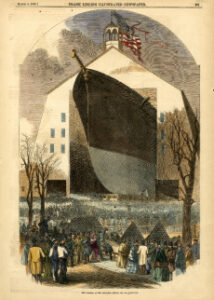
The Yard-built USS Niagara and the British HMS Agamemnon meet mid-ocean to lay the first undersea telegraph cable. On August 5, Queen Victoria transmits the first Morse code message to the U.S.
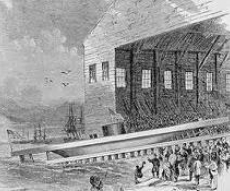
The USS Monitor – the first ironclad warship commissioned by the Union Navy – is outfitted at the Yard after being built at the Continental Shipyard in Greenpoint. The "Battle at Hampton Roads" between the Monitor and the CSS Virginia marks the first-ever battle between two armored warships.
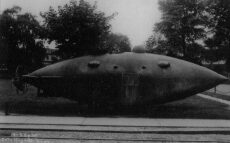
Prototype of the submarine Halstead's Folly, or, the Intelligent Whale.
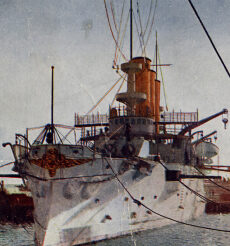
The launch of the USS Maine begins the "battleship era" for the United States. When it sinks nine years later in Havana Harbor, it sparks the Spanish-American War with the rallying cry "Remember the Maine!"
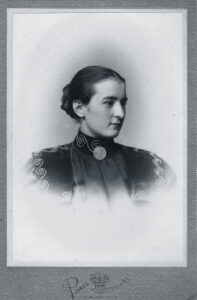
Opera singer Eugenia Farrar sings the first song broadcast over wireless radio. "I Love You Truly" is broadcast to test Dr. Lee DeForest’s arc radiotelephones on the USS Dolphin, docked at the Yard.
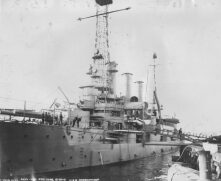
The Yard-built USS Connecticut serves as President Theodore Roosevelt's flagship of the Great White Fleet, 26 vessels that sail the globe on a 2-year tour ushering in the U.S. as a global power.
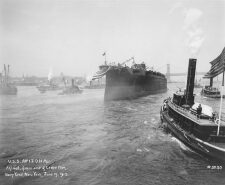
The USS Arizona, the largest ship in the Navy, is launched during WWI but does not play a role in the war. On the morning of Sunday, December 7, 1941, a bomb from a Japanese plane ignites the forward ammunition magazine and the ship sinks in less than 10 minutes, taking 1,177 men to their deaths.
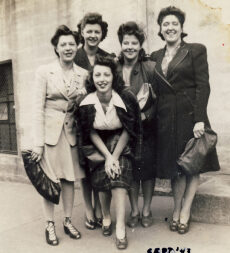
The Yard doubles in size when the government annexes the adjacent land of the second-largest produce market in the nation to construct the world’s largest dry docks and crane. The population explodes as Yard management increases the workforce to 70,000 employees. Women are hired for the first time at the Yard to work as mechanics and technicians. WWII ends on September 2, 1945, when Japan signs unconditional surrender on the Yard-built USS Missouri, a.k.a., "Mighty Mo."
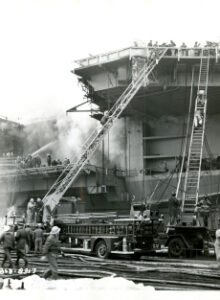
When a forklift pierces a fuel tank of the aircraft carrier USS Constellation (CV-64) during construction, fuel spills on welders below deck, igniting a fire that claims 50 lives and injures 323. The repair costs $75 million and delays the ship’s commissioning by seven months, seriously tarnishing the Yard’s reputation.
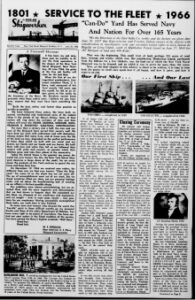
Secretary of Defense Robert McNamara closes the Yard, along with over 90 other military bases and installations. At the time of its closing, the Yard is the employer of more than 9,000 workers and the oldest continually active industrial plant in New York State.
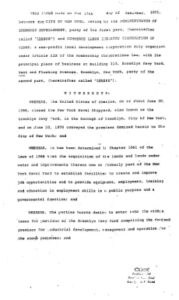
New York City reopens the Yard as an industrial park managed by the nonprofit organization Commerce, Labor and Industry in the County of Kings (CLICK). The largest tenant, Seatrain Shipbuilding, lays off 3,250 workers in 1975. Brooklyn House Representatives Shirley Chisholm and Fred Richmond obtain Congressional loans totaling $40 million to retain vital jobs, but Seatrain closes in 1979. Mayor Koch replaces CLICK in 1981 with the Brooklyn Navy Yard Development Corporation (BNYDC).
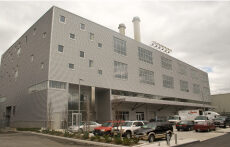
Following the closures of two major maritime tenants and the resulting catastrophic job loss, BNYDC management begins to diversify its tenant base. Large spaces are carved up to accommodate small industrial enterprises that reflect the diversity, energy, and creativity of the community.
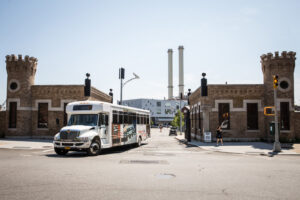
Diversification leads to 98% occupancy, with over 200 small-to-mid-sized businesses employing 3,000 people. BNYDC's Employment Center is expanded, a Summer Youth Program is established, and a shuttle service to the subway is launched to provide better access and encourage the use of mass transit.
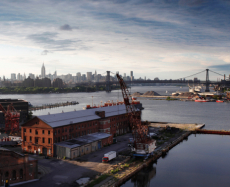
New York City takes note of BNYDC's success and funds major upgrades to the Yard's basic infrastructure, some of which dates to the Civil War era. The number of businesses grows to 275 with nearly 6,000 employees. BNYDC undertakes sustainability initiatives to support a rapidly growing cluster of green manufacturers. The Yard's largest expansion since WWII is underway.
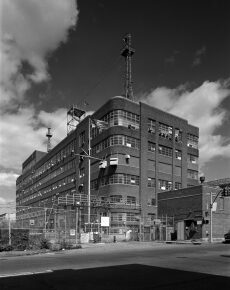
Steiner Studios opens in the Yard. The 310,000-square-foot facility is the largest and most sophisticated studio complex outside of Hollywood, offering five sound stages and state-of-the-art film and television production facilities. In 2010, Steiner Studios doubles in size, constructing five new sound stages and reusing the former Navy Applied Science Laboratory. A partnership with Brooklyn College introduces the nation’s first affordable film school on an active studio lot. In 2017, expansion continues with the construction of new sound stages and backlots.
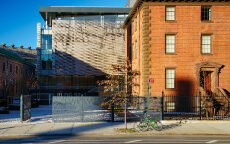
BNYDC opens Building 92 – an exhibition, visitor, and employment center – to promote Yard tenants, provide enhanced job placement services for the community and celebrate the Yard’s rich history. Construction is also completed on the 250,000-square foot Green Manufacturing Center, the 35,000-square-foot Duggal Greenhouse, and the country's largest rooftop farm, Brooklyn Grange.
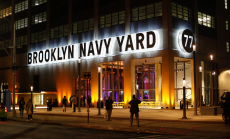
The Yard is continuing its biggest expansion since WWII, with some $700 million in new development in progress. With the openings of Building 77 and Dock 72, redevelopment of Admirals Row, expansion of Steiner Studios, and other projects, employment at the Yard will more than double in the next few years, jumping from 7,000 to 17,000+ by 2020.
Stay up-to-date with the Yard
Get updatesSign up here to stay up-to-date with our public programs and events happening on the Yard.
If you work at the Yard and are interested in receiving our tenant newsletter, please email businessservices@bnydc.org